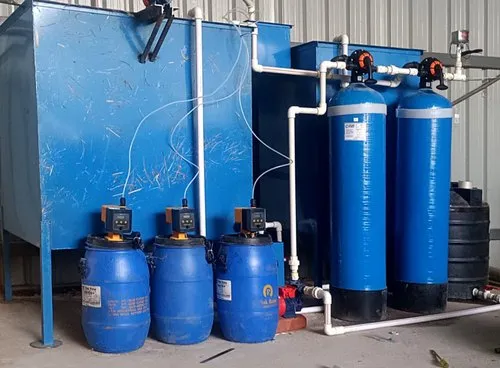EFFLUENT TREATMENT PLANT
An effluent treatment plant (ETP) is a facility designed to treat and purify industrial wastewater, also known as effluent, before its safe discharge into the environment or reuse for various purposes. ETPs play a crucial role in preventing pollution and ensuring compliance with environmental regulations by removing contaminants and harmful substances from industrial wastewater.
Industrial processes generate wastewater that can contain a wide range of pollutants, including organic and inorganic compounds, heavy metals, oils, chemicals, and suspended solids. Effluent treatment plants employ various physical, chemical, and biological processes to treat the wastewater effectively. The specific treatment methods employed depend on the characteristics of the effluent and the applicable regulatory requirements.
Effluent treatment plants are essential in minimizing the environmental impact of industrial activities by effectively treating and managing wastewater. They help industries meet regulatory requirements, protect water resources, and promote sustainable practices. Proper operation, regular monitoring, and maintenance of ETPs are crucial to ensure effective treatment and compliance with environmental standards.
The process of effluent treatment plant typically involves the following stages:
- Preliminary Treatment: Similar to sewage treatment plants, the preliminary treatment stage involves the removal of large objects, debris, and solid particles from the incoming effluent. This is achieved through the use of screens, sedimentation tanks, and oil-water separators. The removal of these materials helps protect downstream equipment and ensures smoother operation of subsequent treatment processes.
- Physical and Chemical Treatment: After preliminary treatment, the effluent undergoes physical and chemical processes to further remove impurities. These processes include coagulation, flocculation, sedimentation, and filtration. Chemicals such as coagulants and flocculants are added to the wastewater to facilitate the formation of flocs that can capture suspended solids, oils, and other substances. The flocs settle in sedimentation tanks, and the clarified water is separated from the sludge.
- Biological Treatment: In the biological treatment stage, aerobic or anaerobic biological processes are employed to degrade and remove organic pollutants from the effluent. Aerobic treatment involves the use of microorganisms that require oxygen, while anaerobic treatment utilizes microorganisms that function in the absence of oxygen. Biological treatment methods commonly used in ETPs include activated sludge processes, sequencing batch reactors (SBRs), and anaerobic digestion.
- Advanced Treatment: Depending on the specific industrial processes and effluent quality requirements, advanced treatment methods may be employed. These include processes like membrane filtration, chemical precipitation, adsorption, advanced oxidation, and disinfection. Advanced treatment helps remove any remaining organic and inorganic contaminants, fine particles, and pathogens to achieve the desired effluent quality.
- Sludge Treatment and Disposal: Similar to sewage treatment plants, sludge is generated as a byproduct of effluent treatment processes. Sludge is treated separately through processes such as thickening, dewatering, and stabilization to reduce its volume and make it suitable for disposal or reuse. Some treated sludge can be used for agricultural purposes or undergo further treatment for energy generation.
- Effluent Discharge or Reuse: The final treated effluent, meeting regulatory standards and quality requirements, can be safely discharged into water bodies or reused for non-potable purposes such as irrigation, cooling, or industrial processes. The discharge or reuse of effluent is subject to local regulations and permits to ensure environmental protection and resource conservation.

